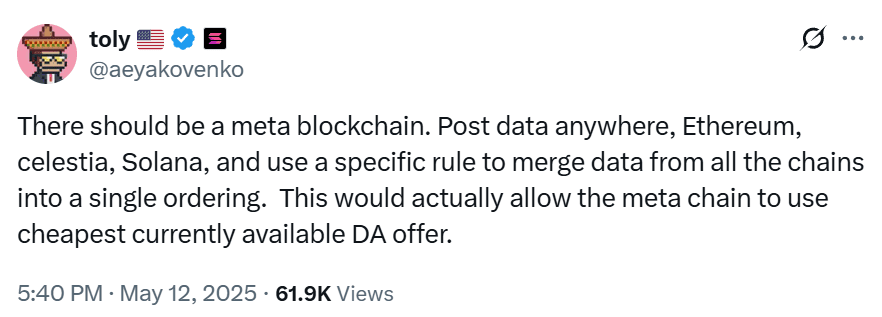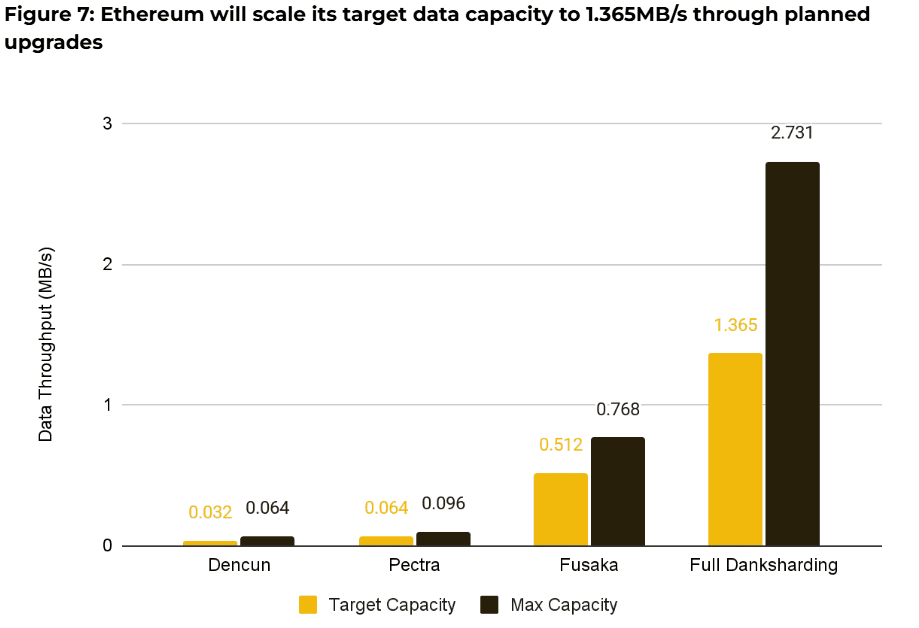Solana Labs co-founder Anatoly Yakovenko has introduced a groundbreaking proposal for a ‘meta blockchain’ aimed at resolving persistent fragmentation and improving interoperability across diverse blockchain networks. This innovative solution seeks to create a unified data availability (DA) layer that aggregates and orders data from multiple layer-1 (L1) chains, including Ethereum, Celestia, and Solana.
What is a Meta Blockchain?
Yakovenko’s vision involves a meta blockchain acting as an aggregator, utilizing the most cost-effective DA solutions available across different chains. This approach promises to reduce transaction costs and streamline data validation processes within the blockchain ecosystem.
Data Availability (DA) Explained
Data availability layers are crucial third-party solutions that ensure blockchains possess the necessary data for transaction validation. These layers play a pivotal role in maintaining the integrity and security of blockchain networks.
The Interoperability Challenge
Blockchain interoperability remains a significant hurdle for Web3 developers. Currently, siloed L1 blockchain networks lack efficient communication and data exchange mechanisms, necessitating cross-chain interoperability solutions like DA layers. Yakovenko’s proposal directly addresses this challenge.
Ethereum’s Role: The Fusaka Upgrade
Ethereum is also actively pursuing DA improvements. The upcoming Fusaka upgrade, anticipated in late 2025, will focus on enhancing Ethereum mainnet’s capacity as a DA layer through the introduction of EIP-7594. This upgrade could potentially boost Ethereum’s value accrual, depending on the continued adoption of Ethereum for data availability by existing layer-2 blockchains.

Making Data Availability Economical
Yakovenko emphasizes that reducing the cost of data availability is paramount to lowering transaction costs on blockchain networks. He asserts that bandwidth is the fundamental bottleneck, and cheaper DA solutions can pave the way for more affordable blockchain operations.
Benefits of a Meta Blockchain:
- Reduced Transaction Costs: By utilizing the cheapest available DA solutions, the meta blockchain lowers the financial barriers to blockchain usage.
- Enhanced Interoperability: The aggregation of data from multiple chains promotes seamless communication and data exchange across different blockchain ecosystems.
- Improved Scalability: Efficient data availability contributes to better scalability, enabling blockchain networks to handle larger transaction volumes.
Eliminating External Sequencers
A more advanced iteration of Yakovenko’s solution proposes eliminating external sequencers through a rule-based system for merging transactions across chains. This would allow users to seamlessly send transactions across different blockchain networks.
Industry-Wide Call for Interoperability
Other blockchain industry leaders have echoed the call for greater interoperability and collaborative tokenomics. Charles Hoskinson, founder of Cardano, stressed the importance of cooperative economics within the crypto industry to withstand growing competition from traditional tech firms.

Cardano’s Approach: Minotaur Protocol
Cardano is actively developing “Minotaur,” a multi-resource consensus protocol designed to align blockchain network incentives. This protocol combines multiple consensus mechanisms and networks to distribute a unified block reward across participating networks simultaneously.
Conclusion
Anatoly Yakovenko’s meta blockchain proposal represents a significant step toward addressing the fragmentation and interoperability challenges plaguing the blockchain space. By creating a unified DA layer, this solution has the potential to reduce transaction costs, enhance scalability, and foster greater collaboration across the blockchain ecosystem. As the industry continues to evolve, such innovative solutions will be critical in unlocking the full potential of blockchain technology and Web3 applications.